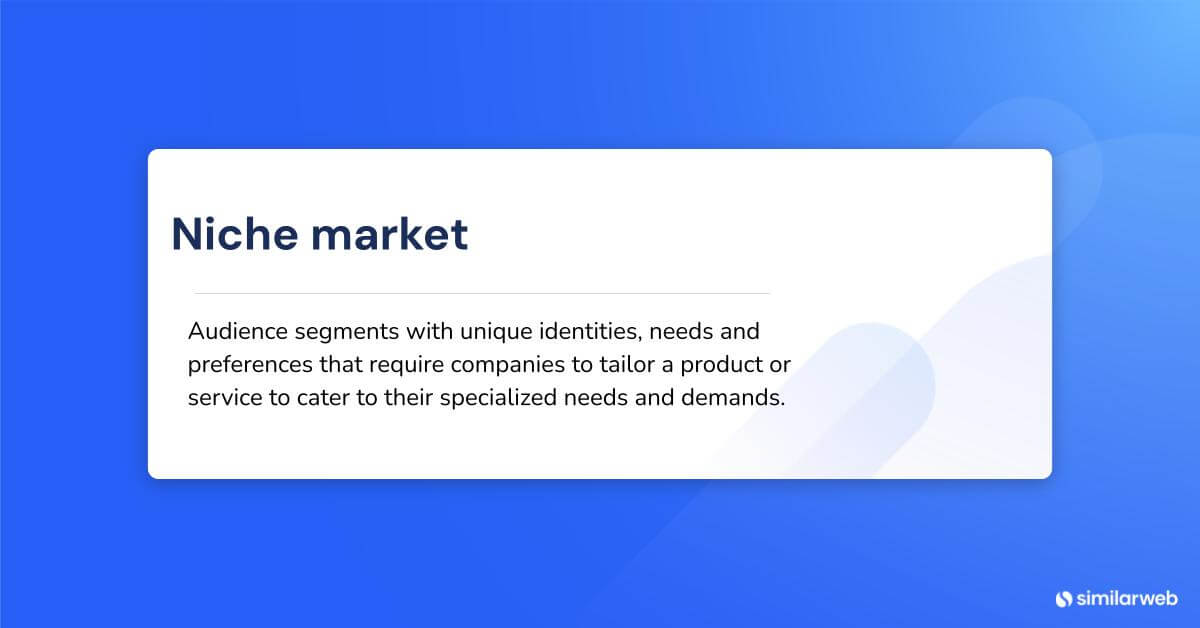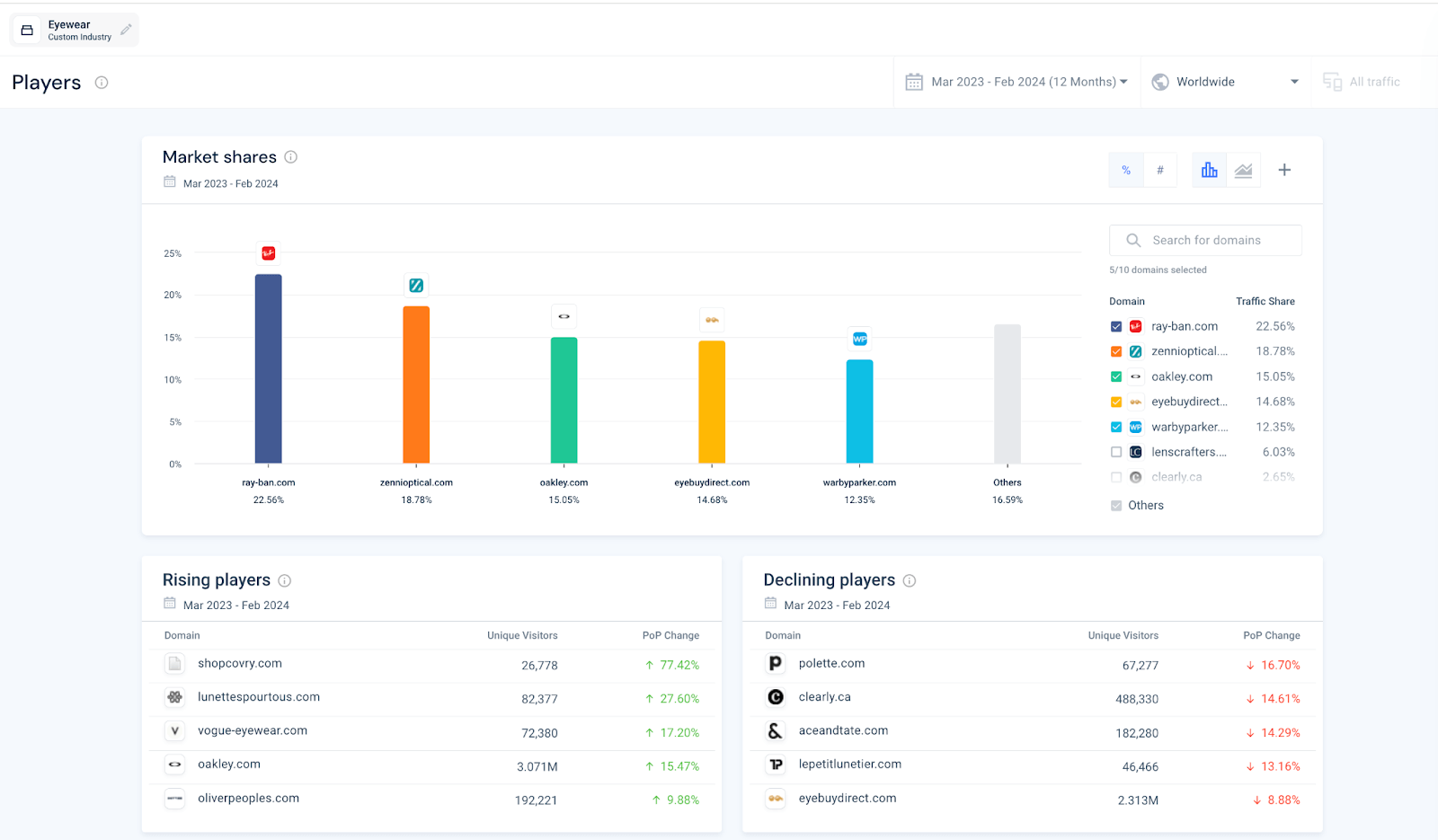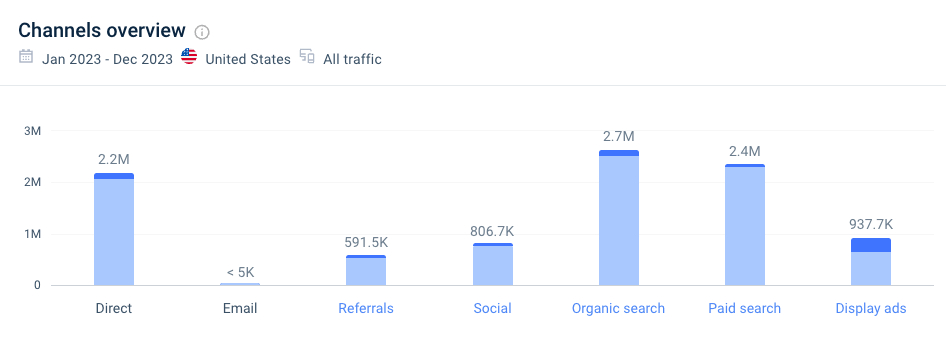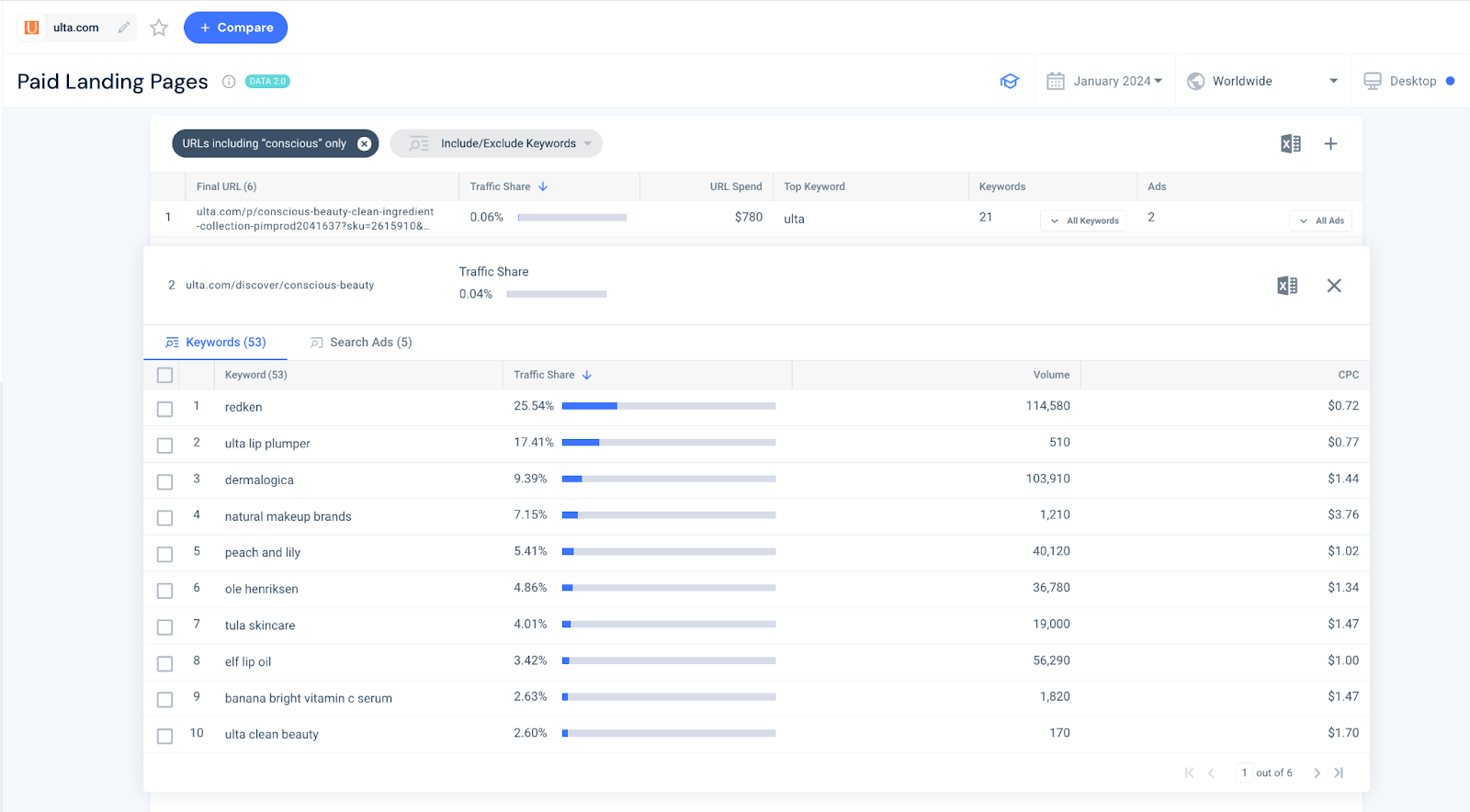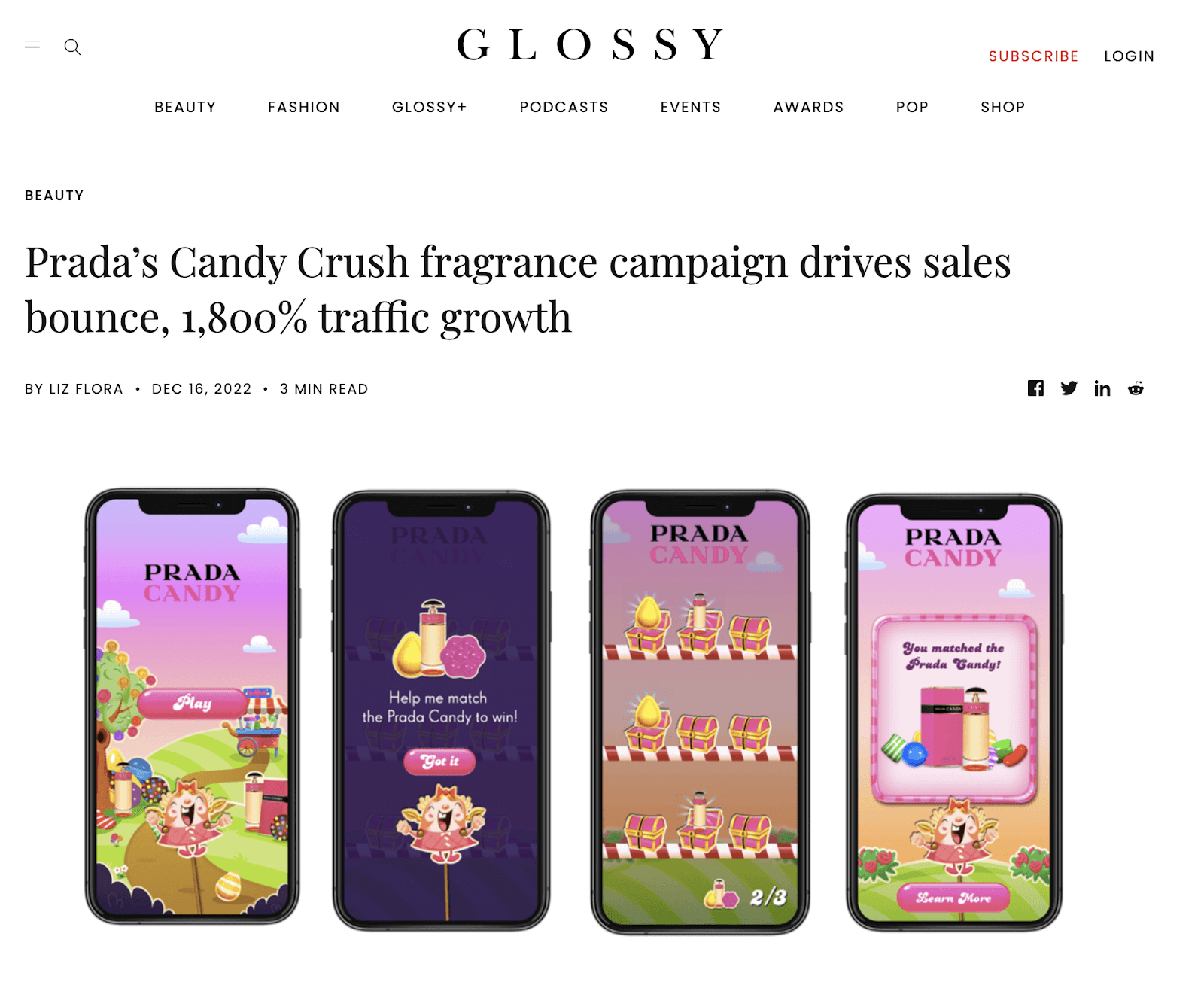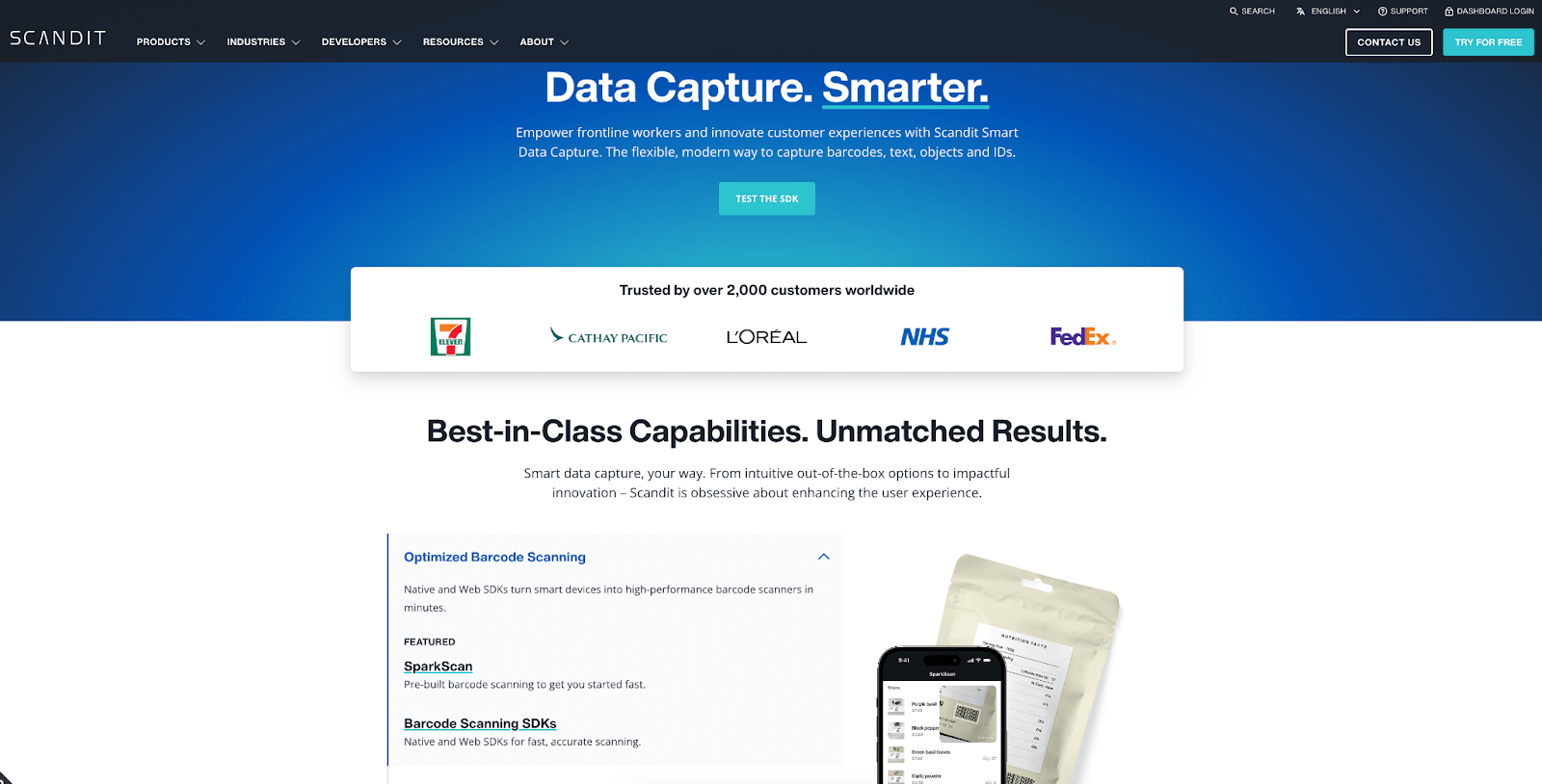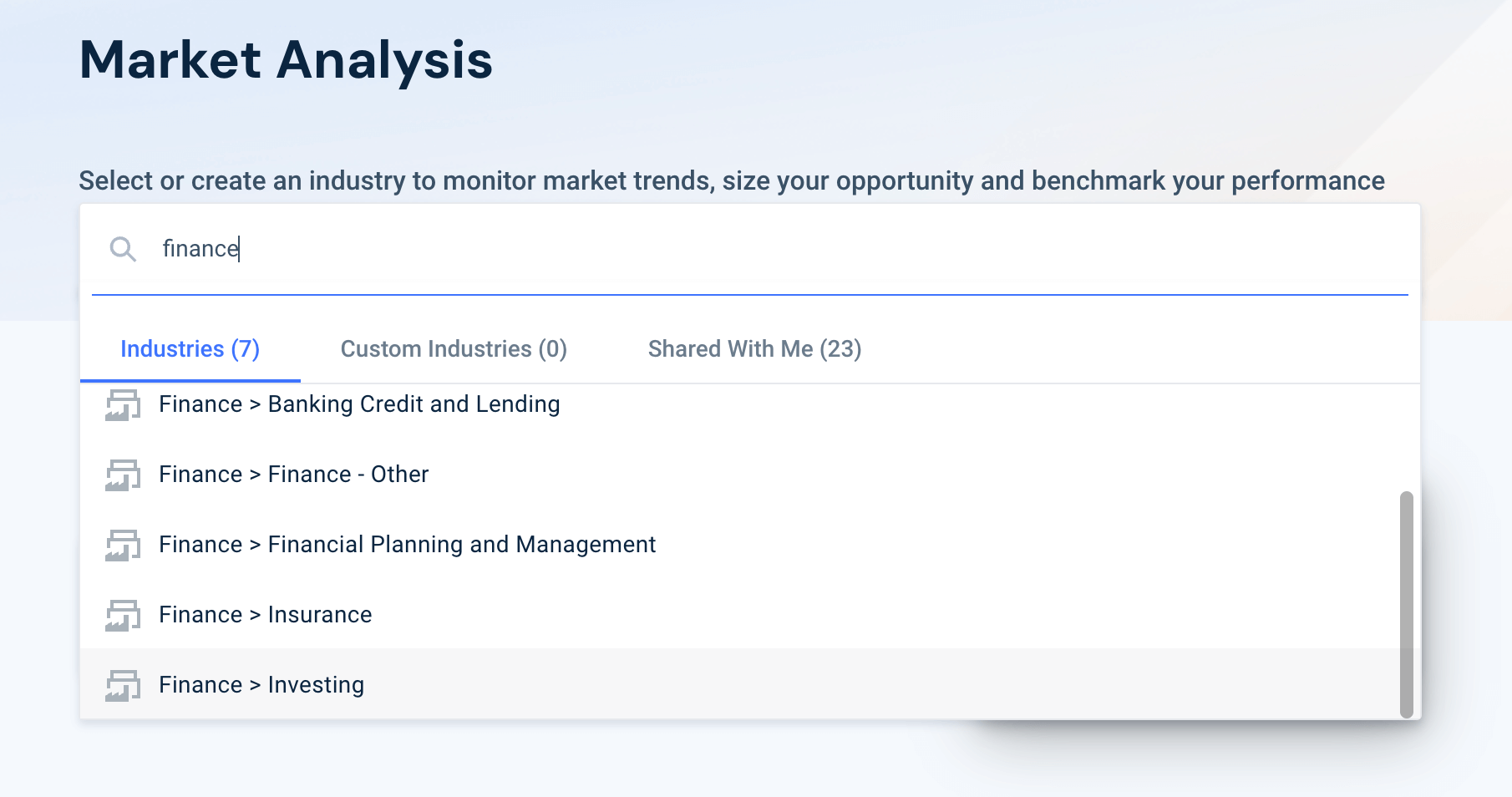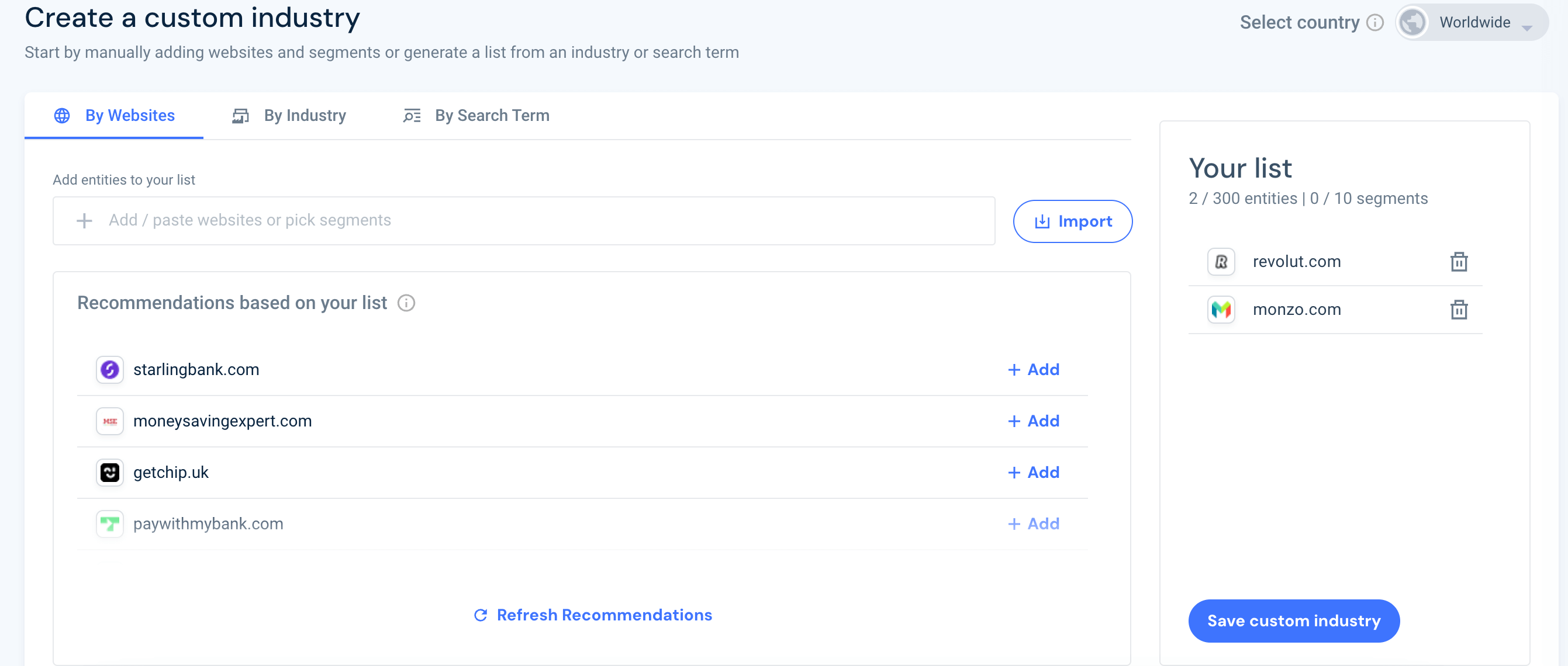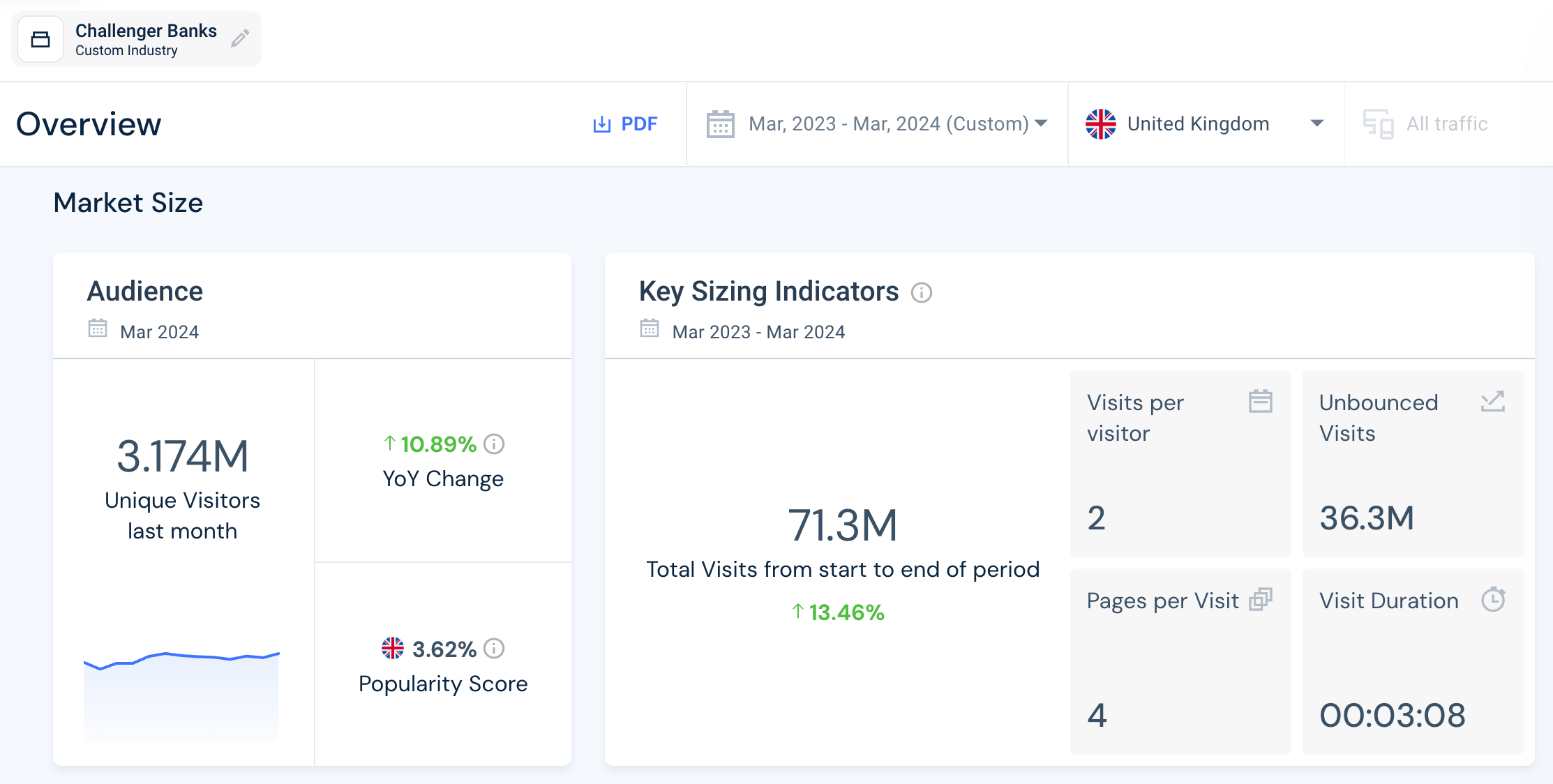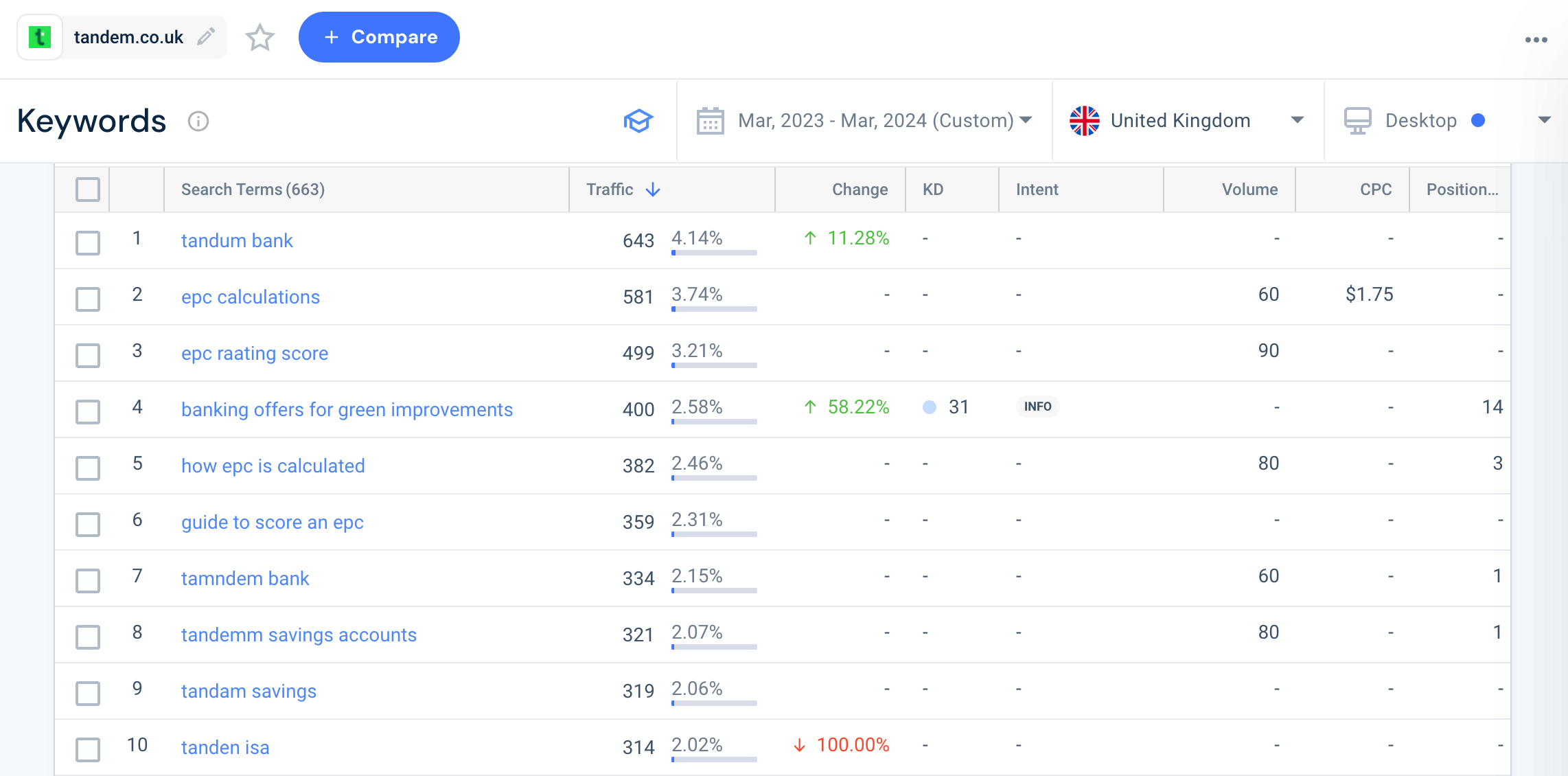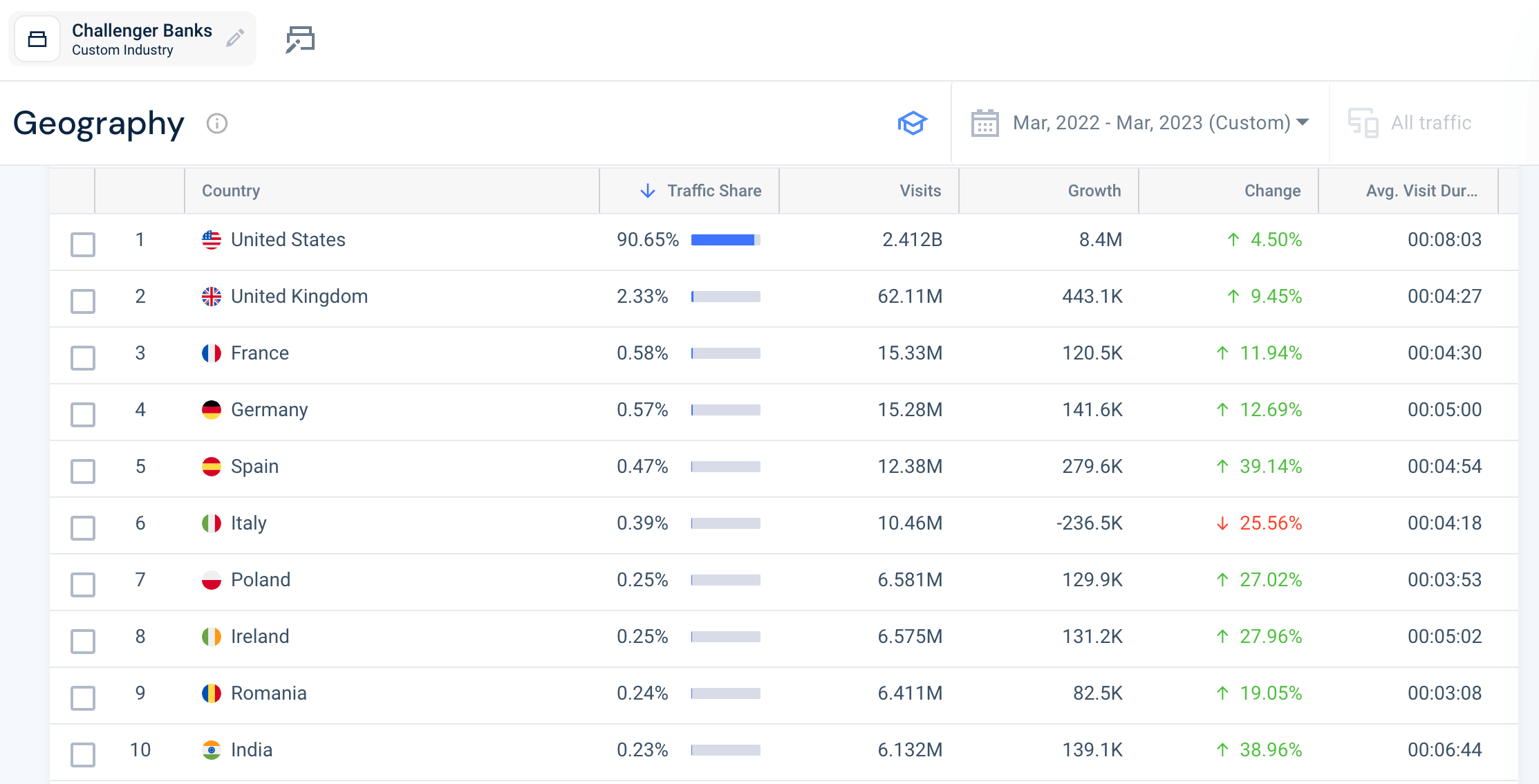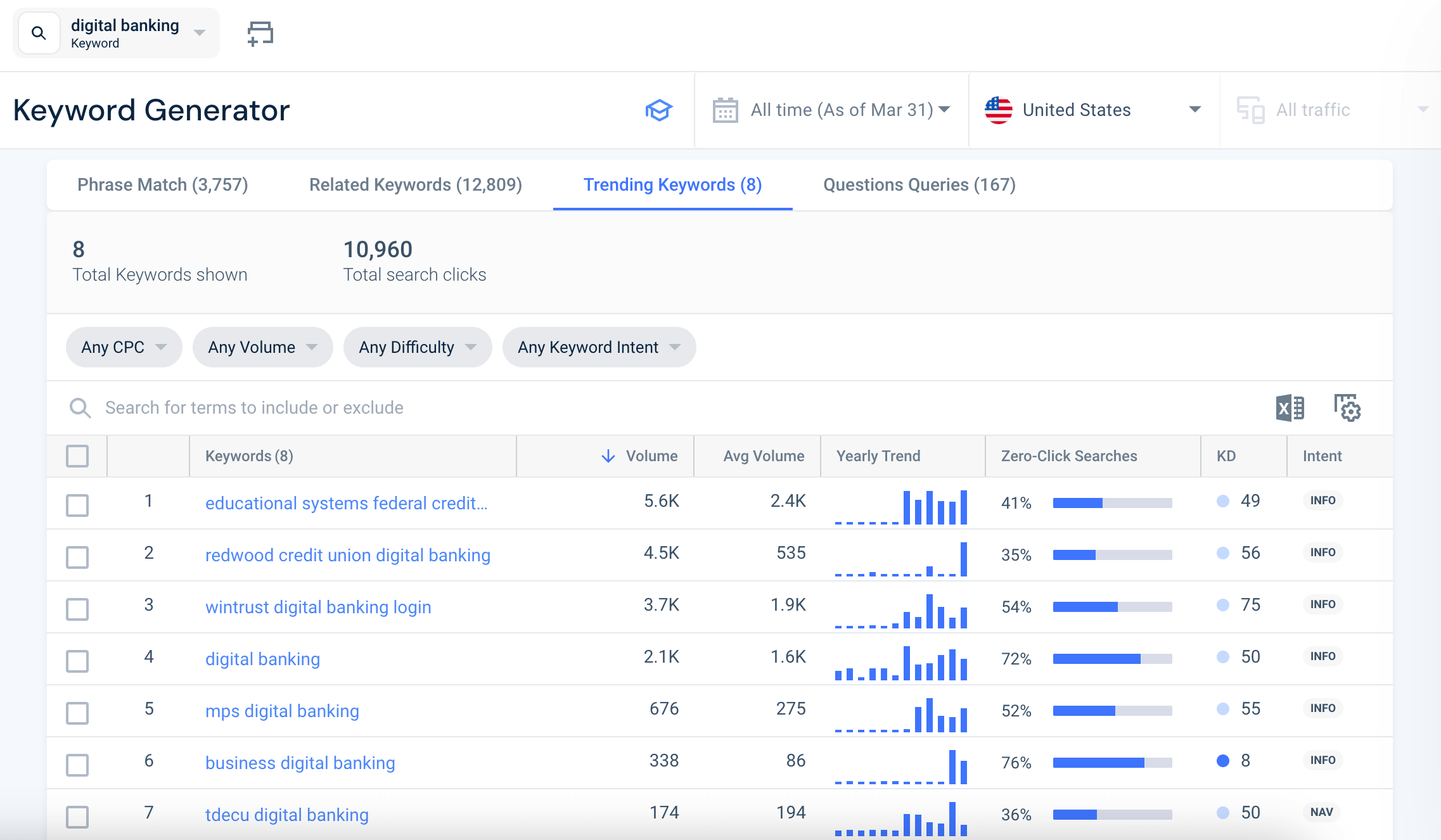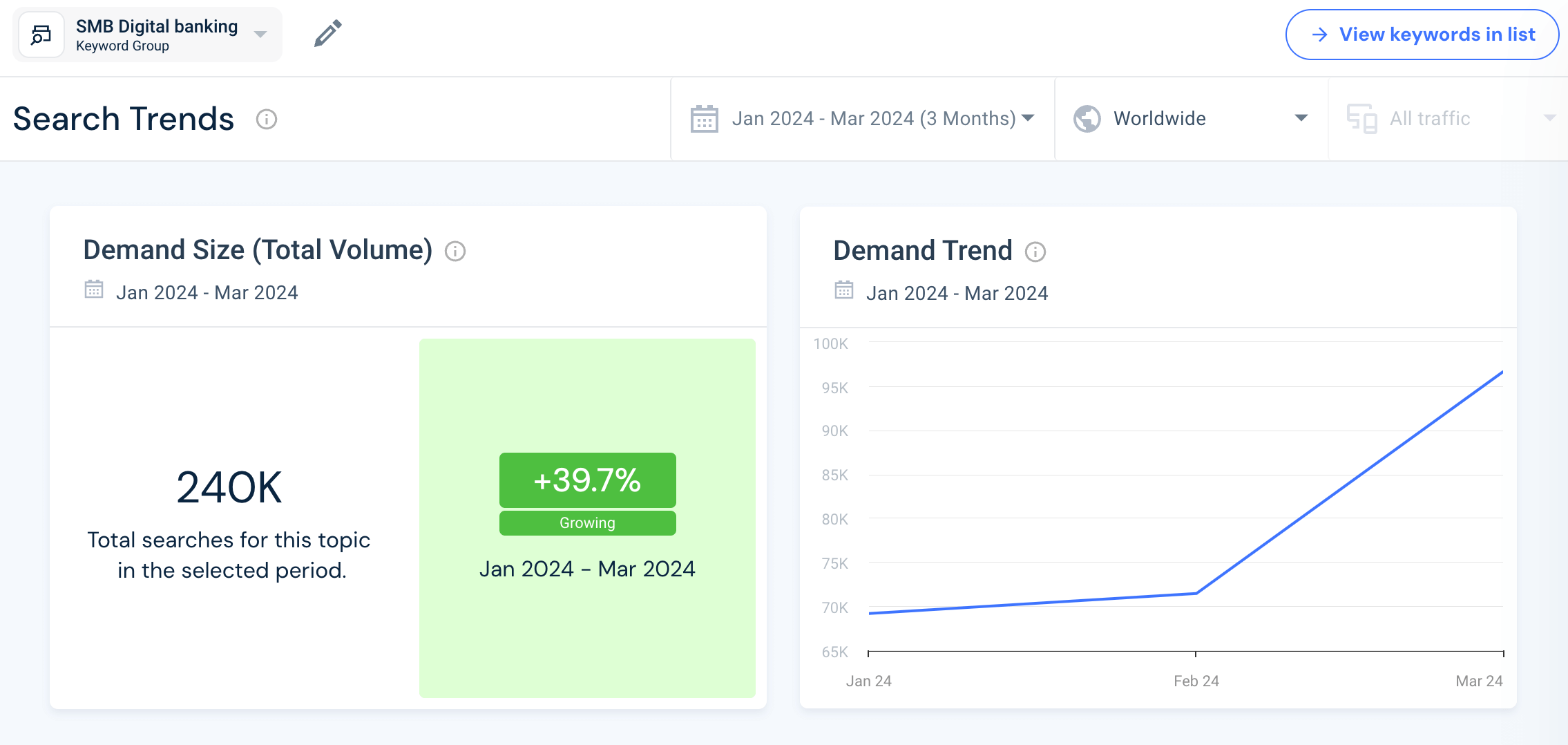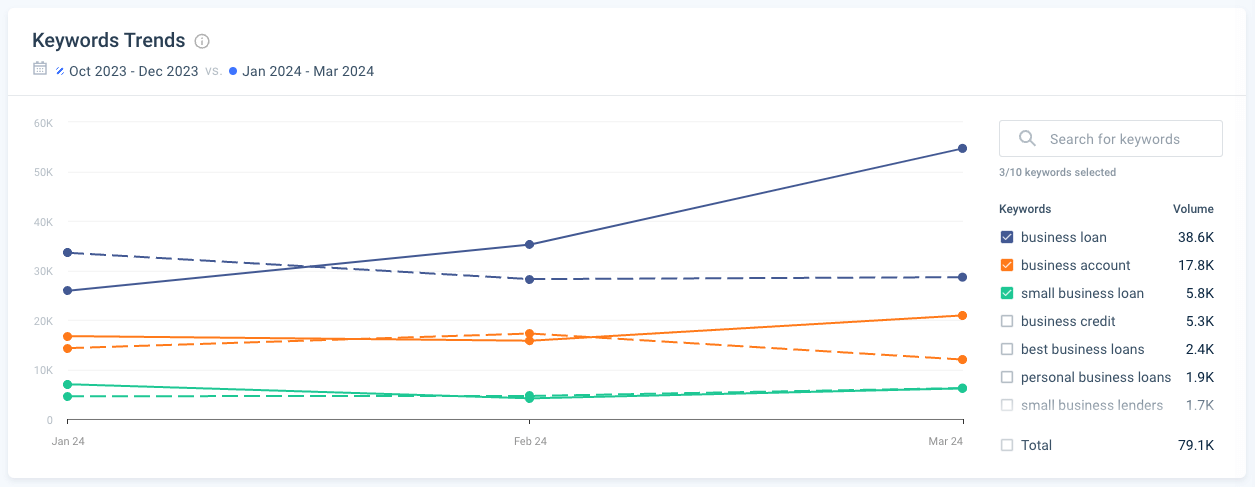What is a Niche Market? And How to Find the Right One

We’ve all been there. You’re a customer searching for something specific, perhaps a bit unusual, but everywhere you turn, you’re faced with choices that appeal to more mainstream tastes.
Then, you find a store that sells exactly what you’re looking for. The relief, the gratitude you feel towards the store for finally scratching that itch.
I bet you’re expecting, even willing, to pay more for whatever you’ve been searching for, seeing as it’s been so hard to find. And, next time you need that product, it’s more than likely you’ll head back to the same store.
That’s the magic of a niche market in a nutshell. ✨
As a business, when you tap into the highly specialized needs of smaller segments within your target audience, you’ll open up a world of opportunity (and profit). And while those segments can be tricky to find, it’s really worth it.
Luckily, you’ve got Similarweb’s Digital Data to help you track down those elusive yet lucrative niche markets.
Let’s dive into the nitty gritty.
What is a niche market?
A niche market consists of specialist audience segments whose needs are not met by businesses marketing to the mainstream. They have unique preferences and identities and require companies and brands to tailor a product or service to cater to their specialized needs and demands.
Identifying a niche market often equates to identifying a gap in your market. When you discover a subset of customers who are not being fully satisfied by your offering, you can go about fulfilling those needs with an adapted product, or perhaps something new entirely. And, who knows where that can lead?
The key with niche markets is that the potential for profit lies not in how many you reach, but in how deeply you resonate with those you do, as well as how likely they are to come back for more. It’s about the power of becoming indispensable to a select few, as well as satisfying the majority.
The key benefits of a niche market
If we haven’t already made it clear why you should pay attention to the little guys, let’s talk about a few major benefits of targeting a niche market:
Less competition
Focusing on a specific segment of the market means fewer competitors vying for attention. This creates a less crowded landscape, making it easier for your brand to stand out and lead.
For instance, eyewear giant EssilorLuxottica faces minimal competition with its diverse product lines, including major brands like Ray-Ban and Oakley. With distribution in 300,000 to 400,000 stores worldwide, it dominates the global eyewear market. In order to compete in this space, other eyewear brands and distributors can still carve out market share by targeting smaller, more specific audience segments.
Customer loyalty
When a business tailors their offerings and messaging to a specific audience, they’ll also forge deeper connections with their customers.
A super-targeted approach is much more likely to resonate with them and send customer satisfaction and loyalty through the roof. People always appreciate when their unique needs are met.
Let’s look at Greenies, a pet care that sells healthy vet-recommended pet treats that pets love, including dental canine products, which saw 2.7M visits from organic search and 2.2M visits from direct traffic in 2023, up 28% year-over-year (YoY):
Higher profits
Due to their scarcity and uniqueness, specialized products designed for niche markets can often demand higher prices. The perceived value of these specialized offerings means that customers are willing to pay a premium for products that match their requirements.
For instance, Ulta, a leading beauty retailer, has strategically allocated sections on ulta.com for categories such as ‘Conscious Beauty,’ ‘Vegan,’ or ‘Clean’ makeup. This targeted approach facilitates consumer navigation, catering to niche preferences and fostering a willingness to invest in pricier products.
Laser-focused marketing
When targeting niche markets, their very nature means that you are forced to tailor your marketing efficiently in order to strike a chord with them. This focused approach can lead to a more effective allocation of resources and maximize the impact of marketing investments.
For instance, Prada Beauty exemplifies this with its targeted entry into the gaming space through a Candy Crush campaign, specifically aimed at younger tech-savvy audiences. This initiative yielded remarkable results, with sales soaring by up to 1,800% week-over-week. The mini-game, themed around the Prada Candy fragrance, not only engaged users but also drove traffic to prada.com by offering a free sample upon completion.
Opportunity for innovation
Meeting the needs of a niche market often encourages businesses to innovate in order to address specific needs and challenges. This can lead to the development of innovative and unique products or services that really set the brand apart from competitors.
Innovation is pivotal to a brand’s success. A notable example of a company that does this well is the Scandit Smart Data Capture Platform, which caters to businesses requiring intelligent data capture from barcodes, text, IDs, and objects. This platform empowers real-time, data-driven decision-making, engagement, and scalable workflow automation.
A data-backed example of a niche market
To further explain what a niche market is, let’s use an example from one of Similarweb’s recent consumer trend reports on the Financial Services sector.
Our report highlighted that digital banks like Revolut and Monzo – known as ‘challenger banks’ because they are going up against the traditional Big 4 – are edging their way in by catering to certain niche markets.
Their digital-first offerings align well with the needs of a younger, more tech-oriented audience that values convenience, transparency, and innovative features. These intuitive banking solutions help distinguish them from the larger traditional banking institutions which are generally slower to adopt.
Revolut takes it a step further than Monzo with its cryptocurrency and stock trading features – a niche within a niche.
Revolut users can buy, hold, and sell cryptocurrencies directly through the app, as well as invest in stocks, appealing to those interested in personal investing without the need for a separate brokerage account. This caters to an even broader niche of users interested in personal finance and investment beyond traditional banking services.
How to find a niche market: 7 expert tips
Building on the challenger bank example above, imagine you’re another contender aiming to disrupt an industry dominated by the Big 4. Much like Monzo and Revolut, your competitors have expanded their market share by targeting various gaps and niches within the banking sector.
To compete effectively, you must be able to identify and leverage these opportunities. Ideally, you’ll discover your unique niche audience, setting yourself apart from rivals. You can easily do this by using Similarweb’s range of market research tools. Here’s how:
Look at Similarweb’s ready-made industries
Similarweb boasts over 200 industries – and your niche may already be there. For example, as well as Finance, there are also subsectors like Banking and Credit, Insurance and Investing that you can delve into to find your niche audience.
Create a custom industry
Can’t find the right sector from our predefined list? Simply create a custom industry with Similarweb based on your research of the players leading in your current sector/niche. You can do this within Market Analysis:
Here, we’ve added Monzo and Revolut to our ‘Challenger Bank’ custom industry as a starting point. The platform will offer recommendations based on these websites to help you add more relevant competitors to your custom industry.
Understand your market
Once you’ve got your industry down, the next step is getting an overview of your chosen market within Market Analysis.
For example, traffic to the Challenger Bank industry has increased by 13.5% in the last 12 months, leading up to March 2024:
Here you can see that total visits were up 13.5% as compared to the previous year.
Check out which players are on the rise
Next, have a look at the ‘Rising players’ and ‘Declining players’ to get some insight into market dynamics and the impact of changing consumer preferences and emerging trends:
Some insights you can glean from these players to help you find a niche market include:
- Emerging trends and consumer interests: Rising players often succeed because they tap into emerging consumer interests or fulfill unmet needs within the market. Identifying what these new entrants are offering can reveal the most current trends and preferences within your target audience.
- Innovative business models or technologies: Similarly, the rising players may be using innovative business models and technologies that differentiate them from the competition and make them appeal to niche market segments. Analyzing these further can inspire new ways to reach them.
- Keyword and content strategies: Look into the keywords, content, and SEO strategies that are driving traffic to these rising websites. This can indicate what topics or products are currently resonating with the audience and may highlight niche areas not yet saturated.
For example, Tandem is the top-rising player here. Analyzing tandem.co.uk further reveals that they target several niches within banking – chiefly sustainable and digital banking – which are very current and trending topics. We also know that these topics appeal most to the younger, tech-savvy generations, which could indicate an audience you need to start targeting.
Head to our Website Analysis tool and dive deeper into each rising player to uncover the trends and consumer interests that they are capitalizing on. To catch what’s trending, check out their top keywords and spot terms and topics that are driving the most traffic to their site:
Here, by looking at Tandem’s top organic keywords, we can see that their traffic from the search term ‘banking offers for green improvements’ has increased by 58.2% since last month. This shows a growing interest in green banking solutions for Tandem.
Dive into audience demographics
Analyzing the age distributions and gender split of a group of websites in the same industry can provide important insights into consumer behavior, preferences, and potential market niches.
You can find this audience demographics data for the Challenger Banks industry under Market Analysis, where you get a clear overview of their core audience over the last 12 months:
For example, the 25-35 age cohort clearly dominates here, but when you compare the data to 2022-23, there is a slight increase in audience engagement within the 18–24-year-olds, while the other age brackets remain stable. Once again, this signals a growing younger audience to target in the near future.
Look for untapped global markets
Within Market Analysis, you can also look into the geographical data of your chosen industry to spot where markets are growing or declining. This helps you surface new emerging markets as quickly as possible:
While in this example, the US market currently has the majority of traffic share, we can see other countries like Spain (up 39%), Ireland (up 27%), and India (up 38%) are potential niche markets to keep an eye on. Also, take note of those that are declining or growing slowly so you can make the most lucrative business decisions.
Track growing demand in your industry
As a last step, analyze a curated keyword list within Similarweb’s Demand Analysis feature to spot key terms that are quickly gaining traction in the Challenger Banks industry.
Create your keyword list within Demand Analysis to get insights on search trends based on these carefully selected keywords. To help you build your keyword list, use Similarweb’s Keyword Generator for inspiration. Be sure to check the ‘trending keywords’ tab for the freshest data:
Here, we can see that ‘digital banking’ and ‘business banking’ are on the rise. Business banking, particularly for small businesses, is a lucrative niche to target in today’s economic landscape, where both consumers and businesses are feeling the pinch of inflation.
In Demand Analysis, data will be generated based on your curated keyword list:
Here, you can gauge whether demand for these key topics is growing, stagnating, or declining, and see the demand trend over time.
Use the ‘comparison mode’ under date range to compare data to a previous period, so you can see the increase or decline in demand. For example, this is a comparison over consecutive three month periods:
Demand for SMB-related banking keywords has increased by almost 24% during this period, with searches on these topics rising from 191k to nearly 240k.
As a final step, check out the Keyword Trends graph to see which keywords are driving these trends over time:
Take note of the keywords’ search volume and trend over time to gauge whether they are on-the-rise opportunities to capitalize on.
And you’re done! By following these steps, you’ll find lots of potential niche markets to explore and begin targeting. Happy digging!
A final thought on niche markets
We’ve explored the world of niche markets and uncovered the huge impact that catering to specific, specialized segments of a broader market can have on a business’s success.
Niche markets represent a unique opportunity to serve an audience whose needs are often overlooked by mainstream providers. By focusing on these specialized segments, businesses not only fulfill unmet needs but also build a loyal customer base willing to pay a premium for products and services that resonate deeply with their specific preferences and requirements.
Similarweb can help you uncover these lucrative niche markets. With its comprehensive digital data and analytics, Similarweb helps identify trends in the market, analyze demand, and understand consumer behaviors within specific industries.
By leveraging Similarweb’s market research tools, you’ll pinpoint emerging niche markets, track rising players, and optimize your marketing strategies to target these specialized segments effectively.
FAQs
What is a niche market?
A niche market is a specialized segment within a broader market, characterized by unique preferences, needs, or identities that mainstream businesses typically do not address. These markets often require tailored products and services to meet specific consumer demands.
What’s an example of a niche market?
An example of a niche market could be digital banks operating within the larger financial sector targeting younger, tech-savvy consumers with their digital products. This niche market values transparency, convenience, and innovative features such as cryptocurrency trading and app-based budgeting tools. These digital banks differentiate themselves by meeting these specific needs that are often overlooked by or slow to adopt by larger banks.
What are the benefits of targeting a niche market?
Targeting a niche market has several benefits, including less competition, which makes it easier for brands to stand out and capture consumer attention. It also fosters deep customer loyalty by focusing on specific needs, leading to repeat business and higher customer retention. Additionally, niche products often command higher prices due to their specialized nature, contributing to greater profitability.
How do I find a niche market to target?
You can find a niche market by using market research analytical tools like Similarweb to conduct thorough industry research, identify existing markets, and analyze market trends and consumer behavior to uncover gaps and opportunities within the market. You can also look at rising market players to gauge emerging trends and preferences and utilize SEO and keyword analysis to understand what drives traffic and interest in these niche areas. Additionally, exploring demographic and geographical data can help pinpoint where potential customers are located and what specific characteristics they share.
Track your digital metrics and grow market share
Contact us to set up a call with a market research specialist
